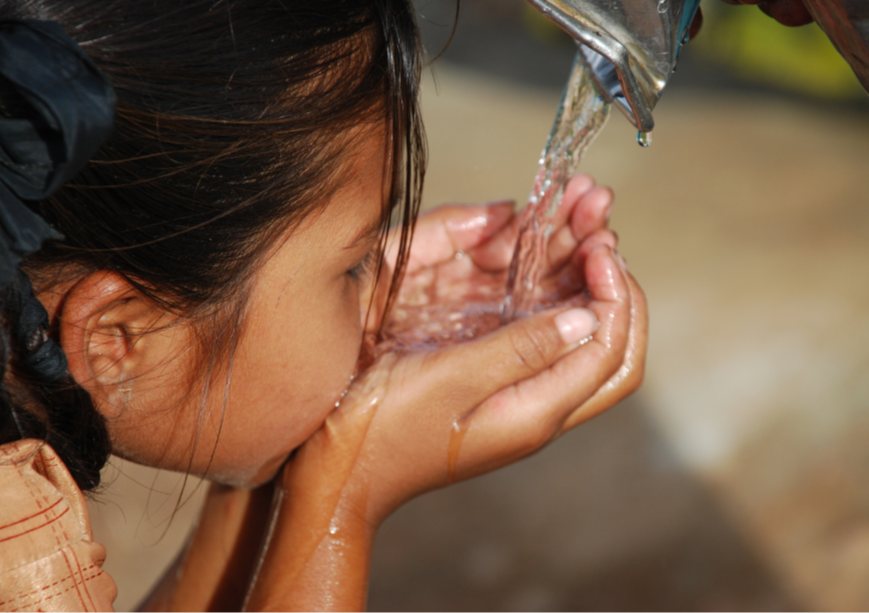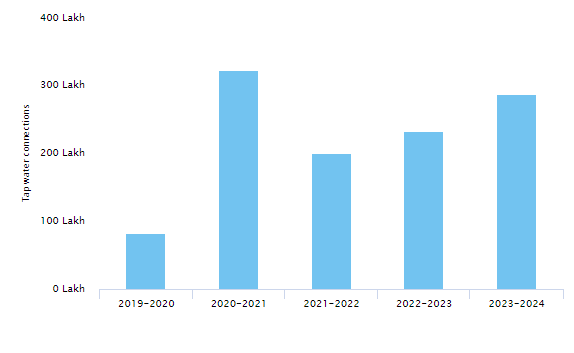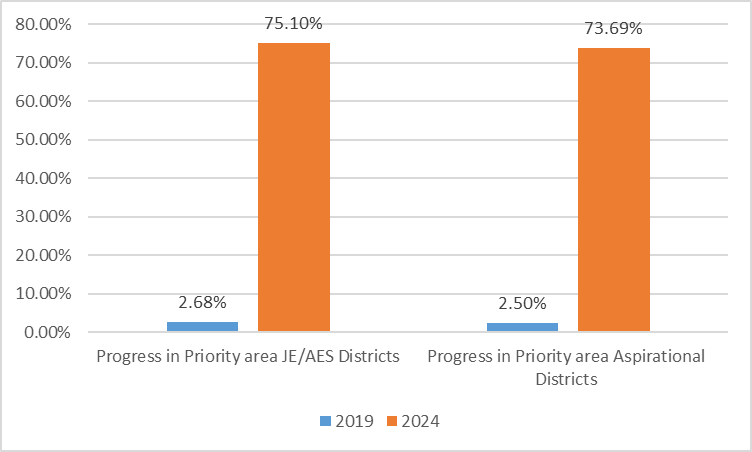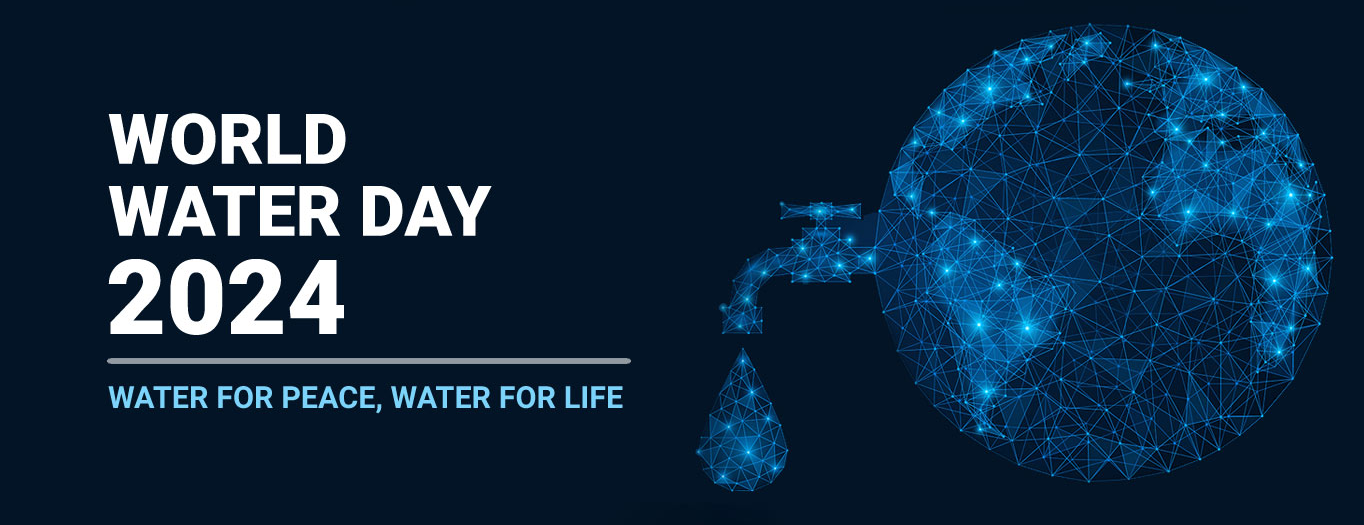
This article is a part of the essay series: World Water Day 2024: Water for Peace, Water for Life
India may be going through a unique phase in its policy history, where many government initiatives with very high incremental impact on the health of Indians lie outside the Ministry of Health. This evolution of efforts within the broad Social Determinants of Health (SDOH) framework also reflects the whole-of-government and the “One Health” approaches, acknowledging that health outcomes are influenced by a multitude of factors and actors across various sectors. The Health in All Policies (HiAP) framework by the World Health Organisation (WHO) supports this interdisciplinary engagement, encouraging collaboration across sectors and levels of government to address health inequities and improve public health outcomes. It leverages systemic interactions and feedback mechanisms to foster sustainable health initiatives, recognising that health and well-being are interconnected with environmental, social, and economic policies.
Har Ghar Jal’s remarkable success in India
Water stands as a fundamental human necessity and a pivotal social determinant of health. It plays a critical role in shaping health outcomes across populations, influencing the spread of diseases and overall well-being.
In India, a nation marked by vast diversity and population, the endeavour to ensure universal access to safe and clean drinking water has been both a formidable challenge and a top priority of the government. The initiation of the Jal Jeevan Mission (JJM) by the Government of India in 2019 marked a significant milestone towards addressing this challenge, aiming to guarantee Har Ghar Jal—water supply to all households. The scheme aims to provide safe and adequate drinking water through individual household tap connections by 2024 to every household in rural India.
A little over 30 out of 190 million rural Indian households had tap water connections in India in 2019. However, in early 2024, 145 million households already have a tap water connection. This means that more than 20 million new tap connections are built every year, on average. This remarkable increase in the percentage of rural households with tap water connections, from 16.69 percent in 2019 to 75.18 percent by 2024, is the kind of spectacular policy success rarely seen in India’s social sector history (Figure 1).
Figure 1: Progress of Har Ghar Jal: New Water Connections per Year

Source: https://ejalshakti.gov.in/jjmreport/JJMIndia.aspx
According to WHO estimates, in 2018, unsafe drinking water caused an estimated 125,995 diarrhoea deaths in India. Therefore, tackling the challenge of providing universal access to safe drinking water not only epitomises a critical stride towards enhancing public health but also embodies a significant leap in mitigating health disparities. There is a strong correlation observed between improved water access and a substantial decrease in diarrheal disease incidence, a major cause of child mortality.
Addressing water quality and accessibility can potentially avert these deaths annually, spotlighting the direct impact of this singular intervention on the nation's health indices and emphasising the integrated approach towards public health advancements.
The role of water as a social determinant of health is paramount. Clean water access influences a wide array of health and societal factors beyond the direct prevention of waterborne diseases. It impacts nutritional outcomes, children's educational attendance, women's labour and time, and economic opportunities. Traditionally, India has faced the dual challenges of water scarcity and compromised water quality. Despite progress over decades, a significant segment of the population remained deprived of safe drinking water, leading to a considerable burden of disease. Waterborne conditions such as diarrhoea, cholera, and hepatitis A have disproportionately impacted the most vulnerable, especially children under five. Therefore, the JJM embodies a public health initiative focused on reducing the incidence of acute diarrhoeal diseases alongside other water-related health conditions.
Recent research has shown that the programme's emphasis on decentralised governance and community participation highlights an essential insight: enduring change requires the active involvement of the communities it aims to benefit. Through targeted financial allocations to states and the strategic use of 15 finance commission grants, the JJM also demonstrated a citizen-centric approach in tackling one of the most significant public health challenges of our times. However, the mission extends beyond the provisioning of tap connections. It encompasses ensuring the supplied water's quality, bridging disparities in access, and the ongoing monitoring and management of water resources. The efforts to establish a comprehensive water quality monitoring and surveillance system are praiseworthy, aiming to guarantee the safety of water supplied through the JJM for consumption.
Reaching The Poorest And The Weakest
In accordance with Gandhi's talisman, the core aim of public policy should be to meticulously consider the impact of every decision on the poorest and the weakest individuals in society, ensuring that each step taken not only contributes positively to their lives but also empowers them, thereby fostering a society where freedom and equity are accessible to all.
The Jal Jeevan Mission has embodied Gandhi's talisman by manifesting this principle through its efforts.
In a significant stride towards inclusivity and health improvement, the Indian government has prioritised the provision of clean tap water to households in relatively poorer districts, plagued by Japanese Encephalitis (JE) and Acute Encephalitis Syndrome (AES). This initiative, part of the Jal Jeevan Mission, has remarkably increased tap water connections in 61 JE/AES-affected districts across five states from a mere 2.68 percent (8 lakh households) to 75.10 percent (2.23 crore households). This monumental increase (Figure 2) has significantly enhanced the health profile of the rural populace in these areas. Furthermore, by July 20, 2023, the mission has successfully eradicated the risk of arsenic and fluoride contamination in drinking water, benefiting all affected habitations reported in 2019—14,020 for arsenic and 7,996 for fluoride—thereby ensuring safe drinking water for all under its ambit.
Figure 2: Har Ghar Jal: Jal Jeevan Mission Progress in the Deprived Areas

Source: https://ejalshakti.gov.in/JJM/JJMReports/pr_area/rpt_pr_area_district.aspx
Similarly, Har Ghar Jal also specifically focused on the 112 aspirational districts in the country. Identified based on their socio-economic indicators, these represent regions most in need of development and progress. By focusing on these areas, the initiative not only aims to enhance the quality of life through the provision of clean drinking water but also serves as a catalyst for socio-economic development. These districts across 27 states have also seen a remarkable increase in tap water connections from a mere 2.50 percent (5 lakh households) to 73.69 percent (1.5 crore households) (Figure 2). Such focus on underserved areas is in the true spirit of the Sustainable Development Goals (SDGs).
The Way Forward
The JJM’s holistic approach, emphasising quality, accessibility, and sustainability, aligns with the global goals of ensuring water and sanitation for all. As India continues on this path, the lessons learned and the successes achieved can serve as a model for other nations striving to overcome similar challenges. The dream of “Har Ghar Jal” is well within reach, symbolising not just the provision of water, but the nurturing of life, health, and prosperity for all citizens.
Oommen C. Kurian is a Senior Fellow and Head of Health Initiative at the Observer Research Foundation.
The views expressed above belong to the author(s). ORF research and analyses now available on Telegram! Click here to access our curated content — blogs, longforms and interviews.




 PREV
PREV



